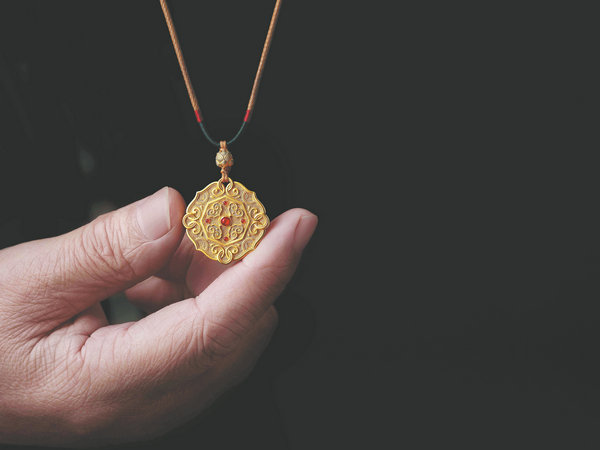

Experts explore a new way of promoting the nation's artistic legacy by combining the eight imperial handicrafts, once the preserve of emperors and their courtesans, with the contemporary designs of a modern fashion brand, Yang Feiyue reports.
Among artworks that were unveiled in Changle county, Weifang city, East China's Shandong province, in late May, a decorative plate stood out. The plate features a dark brown wooden frame carved with delicate blossoms, while the body is adorned with auspicious patterns using lacquer and gold powder. In the center of the plate, an imposing dragon relief is fashioned out of gold and surrounded by eight delicate floral motifs.
The whole thing symbolizes continuous blessings, auspiciousness and prosperity, according to Bai Qun, curator of the Beijing Eight Imperial Handicrafts Museum.
"It is the successful integration of several types of intangible cultural heritage, especially with the application of gold lacquer and filigree inlaying," Bai says.
It is one of 38 artworks that were jointly made by master artists from the museum and the Shandong-based jewelry maker Mokingran.
Other artworks include jewelry for various occasions, such as a pendant by the museum's artist Li Delun that is touched with elements of gold lacquer inlaying, enamel and filigree. A special collection highlighting Confucianism is also presented, taking inspiration from the totems and architecture at the Temple of Confucius, as well as relics found at the Confucius Museum, in the province's Qufu city.
It is part of the effort to inject new life into traditional crafts and patterns through the addition of modern workmanship and design, says Wang Zhongshan, founder of Mokingran.
"With the rise in consumption of domestic products and cultural confidence, the combination of traditional culture and modern craftsmanship is not only an innovative and developmental approach, but also a major trend for the future," says Wang, who, in the 1980s, inherited the traditional fine metalworking craftsmanship that involves metal shaping, engraving, inlaying and embossing from the Chinese arts and crafts master Nan Zhigang.
"It allows for the inheritance and promotion of finer elements of Chinese culture while making gold jewelry more diverse and personalized," Wang adds.
Wang has created many intricate and detailed works of art using gold and silver metals over the years, and was named a provincial inheritor of the fine metalwork craft by the Shandong culture and tourism department in 2018.
His company has evolved into a major domestic player in designing and making gold jewelry.